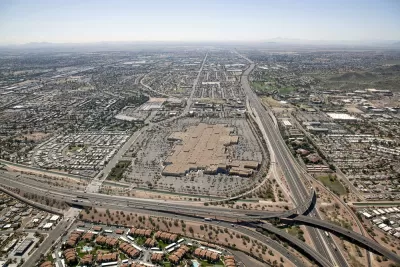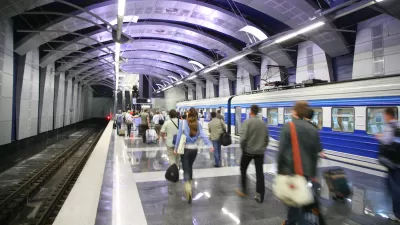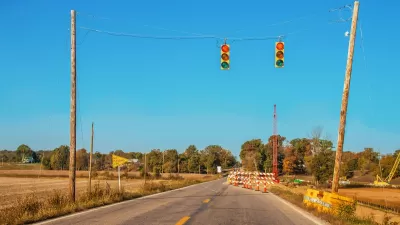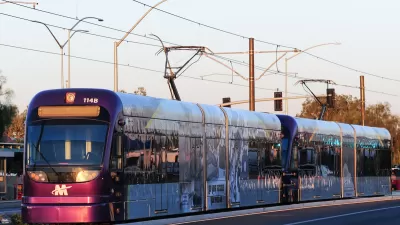It's a vicious cycle: highways enable white flight, establishing a power base for a political party opposed to urban transportation systems.

An article by Melissa de Witte introduces The Road to Inequality: How the Federal Highway Program Polarized America and Undermined Cities, a new book by Clayton Nall.
The main premise of the book: that the federal highway program of the 1950s enabled residential migration at a scale that polarized the nation between liberal cities and more conservative suburban areas. "In turn, this polarization created partisan differences about how to implement transportation policy – think highways, mass transit and trains – in communities across the country," writes de Witte.
The bulk of the article is devoted to an interview with Nall, with a conversation that delves into the inspiration for the book, myths of transportation policy, and the stakes for the country in the ongoing political debate about how the nation prioritizes transportation investments.
FULL STORY: Federal highway program led to inequality and polarization, according to Stanford researcher

Manufactured Crisis: Losing the Nation’s Largest Source of Unsubsidized Affordable Housing
Manufactured housing communities have long been an affordable housing option for millions of people living in the U.S., but that affordability is disappearing rapidly. How did we get here?

Americans May Be Stuck — But Why?
Americans are moving a lot less than they once did, and that is a problem. While Yoni Applebaum, in his highly-publicized article Stuck, gets the reasons badly wrong, it's still important to ask: why are we moving so much less than before?

Research Shows More Roads = More Driving
A national study shows, once again, that increasing road supply induces additional vehicle travel, particularly over the long run.

Which US Rail Agencies Are Buying Zero-Emissions Trains?
U.S. rail agencies are slowly making the shift to zero-emissions trains, which can travel longer distances without refueling and reduce air pollution.

San Diego School District Approves Affordable Housing Plan
The district plans to build workforce housing for 10 percent of its employees in the next decade and explore other ways to contribute to housing development.

Lawsuit Aims to Stop NYC’s ‘City of Yes’ Zoning Reforms
A lawsuit brought by local lawmakers and community groups claims the plan failed to conduct a comprehensive environmental review.
Urban Design for Planners 1: Software Tools
This six-course series explores essential urban design concepts using open source software and equips planners with the tools they need to participate fully in the urban design process.
Planning for Universal Design
Learn the tools for implementing Universal Design in planning regulations.
City of Moreno Valley
Institute for Housing and Urban Development Studies (IHS)
City of Grandview
Harvard GSD Executive Education
NYU Wagner Graduate School of Public Service
City of Cambridge, Maryland
Newport County Development Council: Connect Greater Newport





























